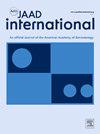Epidemiology of cutaneous leishmaniasis in Karachi, Pakistan
IF 5.2
引用次数: 0
Abstract
Introduction
Cutaneous leishmaniasis (CL), caused by Leishmania species is a prominent neglected tropical disease globally, posing substantial public health challenges. This study explores the epidemiology, clinical characteristics, geographic distribution of CL cases, and role of travel to endemic areas contributing spread of the disease to urban centers like Karachi.
Methods
A retrospective study was conducted from July 2019 to February 2024, enrolling 525 patients with confirmed CL diagnoses at a leading dermatological hospital in Karachi. Demographic and clinical data, including age, gender, lesion characteristics, and travel history were collected. The chi-square test was used to compare travel history to endemic areas between individuals from Karachi and those from other regions.
Results
CL predominantly affected younger age groups, with 35.5% of cases occurring in individuals aged ≤10 years. Male patients accounted for 65.1% of the cohort. Lesions were predominantly located on exposed body parts (96.3%). Most patients in this study were from Baluchistan (49.7%). In Karachi, 37% of patients reported a travel history to endemic areas, whereas only 2.17% of cases from other regions had traveled (P < .001).
Conclusion
The findings underscore the need for region-specific prevention and control strategies, enhanced surveillance, and public health initiatives to mitigate the spread of CL.
巴基斯坦卡拉奇皮肤利什曼病流行病学研究
由利什曼原虫引起的皮肤利什曼病(CL)是全球一种被忽视的重要热带病,对公共卫生构成重大挑战。本研究探讨了CL病例的流行病学、临床特征、地理分布,以及前往流行地区的旅行对疾病向卡拉奇等城市中心传播的影响。方法回顾性研究于2019年7月至2024年2月在卡拉奇一家领先的皮肤科医院进行,纳入了525例确诊为CL的患者。收集了人口统计学和临床资料,包括年龄、性别、病变特征和旅行史。使用卡方检验比较来自卡拉奇和其他地区的个人到流行地区的旅行史。结果scl以低龄人群为主,年龄≤10岁者占35.5%。男性患者占队列的65.1%。病变主要位于暴露的身体部位(96.3%)。本研究中大多数患者来自俾路支省(49.7%)。在卡拉奇,37%的患者报告有去过流行地区的旅行史,而来自其他地区的病例中只有2.17%有旅行史(P <;措施)。结论研究结果强调需要制定针对特定区域的预防和控制策略,加强监测和公共卫生举措,以减轻CL的传播。
本文章由计算机程序翻译,如有差异,请以英文原文为准。
求助全文
约1分钟内获得全文
求助全文

 求助内容:
求助内容: 应助结果提醒方式:
应助结果提醒方式:


